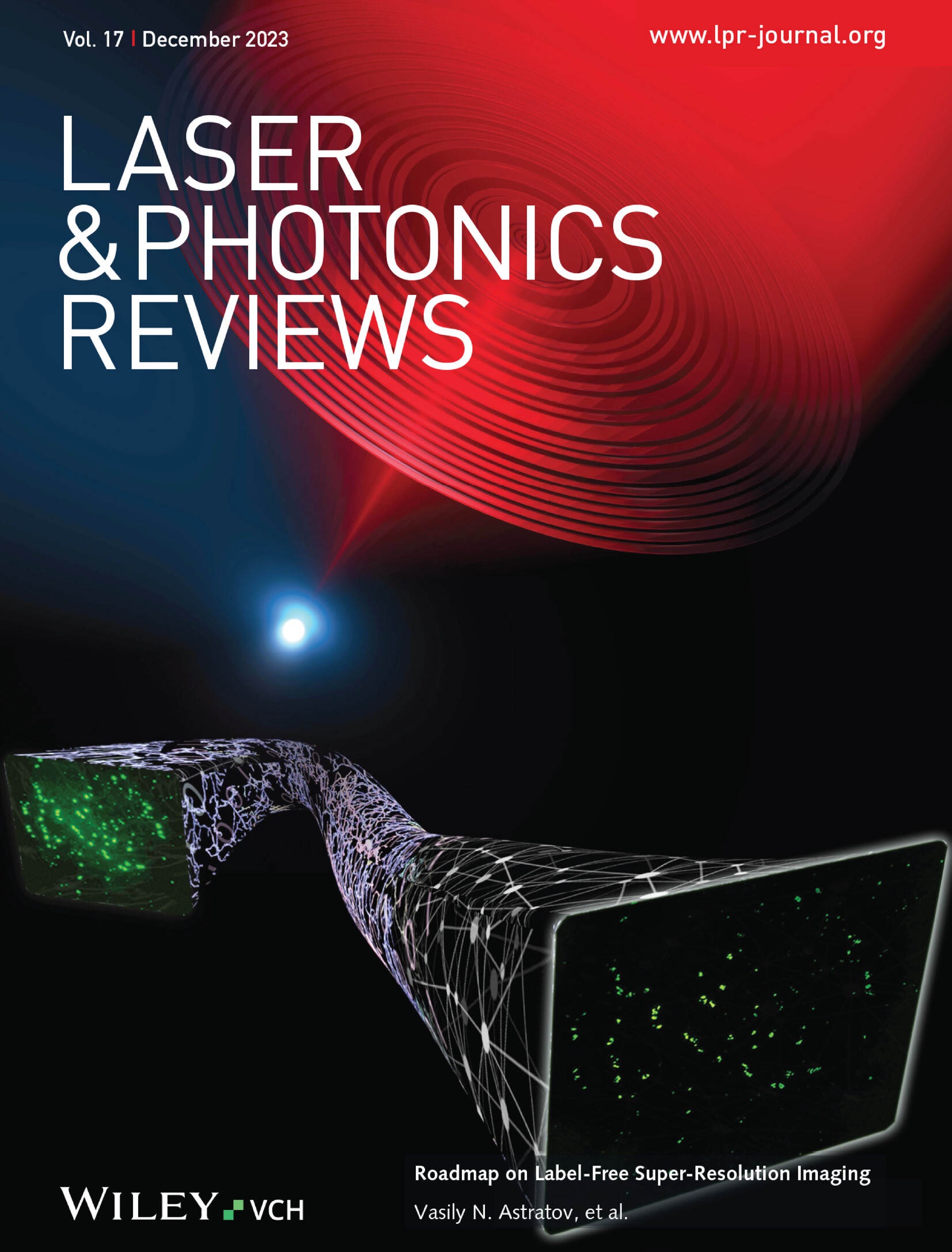Mitigating Carrier Accumulation for Highly Efficient and Stable Extended Shortwave Photodiode Based on PbSe Colloidal Quantum Dots
IF 9.8
1区 物理与天体物理
Q1 OPTICS
引用次数: 0
Abstract
Extended shortwave (eSWIR: 2–2.8 µm) photodiodes based on PbSe colloidal quantum dots (CQDs) have emerged recently. Though the quality of eSWIR PbSe CQDs has been improved significantly, the PbSe CQD‐based photodiodes showed low external quantum efficiency (EQE) and poor stability under self‐driven photovoltaic mode, due to the residual reactive oxygen species (ROS) and carrier accumulation at interfaces. In this work, the ROS is removed by immerging the ZnO layer with 1,2‐ethanodithiol solvent before deposition of PbSe CQD layer, so that the storage stability of the photodiodes improved dramatically. On the other hand, a novel strategy is introduced to mitigate the carrier accumulation, in which a thin p‐type interlayer is inserted into the electron extraction interface. This strategy is universally effective in suppressing the carrier extraction barriers induced by Fermi level equilibration effects at interfaces. Finally, PbSe photodiodes achieve a record zero‐bias EQE of 17% in the eSWIR region. Due to the suppressed noise, the PbSe photodiodes in self‐driven mode demonstrate a specific detectivity of 5.7 Jones at the first excitonic peak of基于PbSe胶体量子点的高效稳定扩展短波光电二极管的减载流子积累
近年来,基于PbSe胶体量子点(CQDs)的扩展短波(eSWIR: 2-2.8µm)光电二极管出现了。虽然eSWIR PbSe CQD的质量得到了显著提高,但在自驱动光伏模式下,由于界面上残留的活性氧(ROS)和载流子积累,PbSe CQD表现出较低的外量子效率(EQE)和较差的稳定性。在沉积PbSe CQD层之前,将ZnO层浸泡在1,2‐乙醇二硫醇溶剂中去除ROS,从而显著提高了光电二极管的存储稳定性。另一方面,引入了一种新的策略来减轻载流子积累,即在电子提取界面中插入薄的p型夹层。该策略在抑制界面处由费米能级平衡效应引起的载流子萃取势垒方面普遍有效。最后,PbSe光电二极管在eSWIR区域实现了创纪录的17%的零偏EQE。由于抑制了噪声,自驱动模式下的PbSe光电二极管在λ = 2.35µm的第一激子峰处具有5.7 Jones的比检出率,与基于体InGaAs的自驱动eSWIR光电二极管相当。此外,该策略还显著提高了光电二极管的工作稳定性。
本文章由计算机程序翻译,如有差异,请以英文原文为准。
求助全文
约1分钟内获得全文
求助全文
来源期刊
CiteScore
14.20
自引率
5.50%
发文量
314
审稿时长
2 months
期刊介绍:
Laser & Photonics Reviews is a reputable journal that publishes high-quality Reviews, original Research Articles, and Perspectives in the field of photonics and optics. It covers both theoretical and experimental aspects, including recent groundbreaking research, specific advancements, and innovative applications.
As evidence of its impact and recognition, Laser & Photonics Reviews boasts a remarkable 2022 Impact Factor of 11.0, according to the Journal Citation Reports from Clarivate Analytics (2023). Moreover, it holds impressive rankings in the InCites Journal Citation Reports: in 2021, it was ranked 6th out of 101 in the field of Optics, 15th out of 161 in Applied Physics, and 12th out of 69 in Condensed Matter Physics.
The journal uses the ISSN numbers 1863-8880 for print and 1863-8899 for online publications.

 求助内容:
求助内容: 应助结果提醒方式:
应助结果提醒方式:


